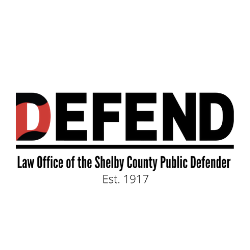Do The Words 'Race Riot' Belong On A Historic Marker In Memphis?
May 2, 2016 5:29 PM ET
Heard on All Things Considered
CHRISTOPHER BLANK
A somber procession began on Sunday in the courtyard of the former Lorraine Motel in Memphis, Tenn., where Martin Luther King Jr. was killed in 1968. Everyone in Memphis knows about that piece of history, but until recently, folks were unaware of a massacre that happened in the same part of town 100 years earlier.
On May 1, 1866, Memphis was home to a massacre that left dozens of black folks dead and countless others injured. This week in Memphis, the city is remembering that grim chapter in its history — a 150-year-old atrocity that shocked the nation and was nearly forgotten.
Stephen V. Ash, a history professor at the University of Tennessee, Knoxville and the author of A Massacre in Memphis: The Race Riot That Shook The Nation One Year After The Civil War, says newspapers of the era labeled what happened in Memphis a "race riot," mostly on the basis that it began as a fight between black Union soldiers and some Irish police officers.
Near this now vacant lot on the corner of B.B. King and G.E. Patterson, a group of black Union soldiers had an altercation with several Irish police officers in 1866.Christopher Blank/WKNO-FM"The rumor among the whites was that this was a full-scale black uprising in South Memphis," Ash says, "and so white mobs began forming, marched into South Memphis and began indiscriminately shooting black men, women and children." This went on for 36 hours.
In the end, Ash says, 46 black people were dead, many others were beaten or raped, and black churches, schools and homes were burned to the ground. The mob attack wound up helping to shape the course of Reconstruction-era politics and speed the passage of the Constitution's 14th Amendment — guaranteeing citizenship to recently freed slaves.
Phyllis Aluko, a Memphis-based attorney, read Ash's book and couldn't believe she'd never heard about the incident, so she started the process of creating a historical marker to commemorate what had happened. First, she got the local chapter of the NAACP involved. It agreed to sponsor and pay for the marker. Then, Aluko submitted an application to the Tennessee Historical Commission, an organization whose mission includes marking "important locations, persons, and events in Tennessee history." What came next was a months-long debate over what to name the violence.
Continue reading here

